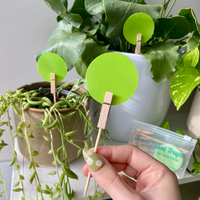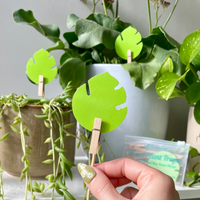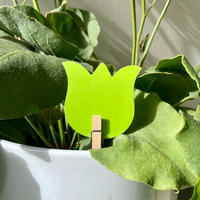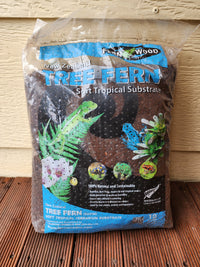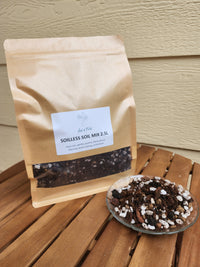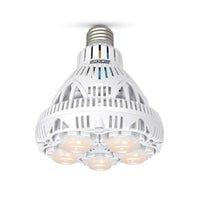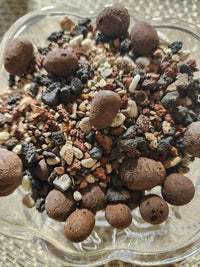Crafting lush indoor gardens often hinges on selecting the right medium, and fernwood tree fern substrate delivers unmatched sustainability and plant performance. By harnessing responsibly harvested tree fern fibre and heat-treating it for biosecurity, Leaf of Faith offers Australian growers an eco-friendly solution that supports moisture management, aeration and robust root systems. We’ll explore its sustainable sourcing, key benefits, practical applications and why Leaf of Faith is your go-to provider.
What Makes Fernwood Tree Fern Substrate a Sustainable Growing Medium?
Fernwood tree fern substrate is an eco-friendly growing medium made from the fibrous stems of kuripaka tree ferns. Its sustainable sourcing minimises waste by repurposing naturally pruned trunks under strict environmental regulations, and its heat-treatment process ensures a pest-free product for Australian gardens. This renewable approach preserves native forests while providing premium fibre.
Sustainable Sourcing of Tree Fern Fibre
Sustainable harvesting practices are crucial for maintaining forest health and biodiversity. Research emphasises the importance of selective harvesting methods to minimise environmental impact and promote forest regeneration. These methods include careful planning, manual extraction, and adherence to strict regulations to ensure the long-term health of the forest ecosystem.
Where Does Fernwood Tree Fern Fibre Come From?
Fernwood substrate originates in privately managed forests, where Kuripaka (Cyathea smithii) and Soft Tree Fern (Dicksonia antarctica) stems are harvested after pruning. This selective trimming encourages natural regrowth and maintains forest health, creating a cycle of renewal that supports local ecosystems and carbon sequestration.
How Is Fernwood Substrate Sustainably Harvested?
Harvest teams follow government-mandated guidelines to extract only mature, naturally detached fern trunks. By avoiding clear-felling and using manual extraction methods, the fibre retains its ecological integrity and minimises soil disturbance. This careful approach ensures each fibre bundle regrows within five to seven years.
Why Is Heat Treatment Important for Australian imports?
Heat treatment eliminates pests, fungal spores and quarantine risks by raising the substrate to 70 °C for a regulated period. This process preserves the natural microbiome while delivering pure fibre to Australia, protecting local flora from biosecurity threats and maintaining product integrity.
What Are the Key Benefits of Using Fernwood Tree Fern Substrate?

Fernwood substrate combines structural stability and plant-friendly properties to support healthy growth.
| Benefit | Mechanism | Outcome |
|---|---|---|
| Moisture Retention | Spongy, capillary fibre structure | Consistent hydration |
| Aeration | Natural inter-fibre voids | Enhanced oxygen flow |
| Root Support | Interwoven fibrous network | Strong anchorage |
| Longevity | Natural antibacterial compounds | Slow decomposition |
Benefits of Using Tree Fern Substrate
Research indicates that tree fern fibre provides excellent moisture retention, aeration, and root support for plants. The unique structure of the fibre creates an ideal environment for root growth, reducing the risk of root rot and promoting overall plant health. The natural properties of tree fern fibre contribute to its longevity and effectiveness as a growing medium.
These benefits translate into reduced repotting frequency and resilient plants that thrive under varying Australian conditions.
How Can Australian Plant Enthusiasts Use Fernwood Tree Fern Substrate?
Whether you’re potting orchids or designing terrariums, fernwood substrate adapts to diverse gardening needs.
Which Plants Thrive Best in Fernwood Substrate?
Many aroids, orchids, hoyas, ferns and epiphytes flourish in this medium.
- Aroids (Philodendron, Monstera) establish vigorous roots.
- Orchids (Phalaenopsis, Dendrobium) benefit from open drainage.
- Hoyas develop strong climber anchorage.
- Tree ferns retain stable hydration in shaded spots.
- Epiphytes (Spanish moss, bromeliads) anchor naturally
These examples demonstrate its versatility for both novice and expert plant keepers.
How Is Fernwood Fibre Used in Moss Poles, Terrariums, and Hydroponics?
In moss poles, strips of fibre wrapped around stakes encourage climbers to attach and colonise. Terrariums enjoy improved humidity control without soggy conditions. For hydroponics, fibre serves as an inert, pH-neutral support that stabilises roots while delivering oxygen.
What Are the Best Practices for Using Fernwood Substrate in Australian Conditions?
To maximise performance under Australian warmth and low humidity:
- Pre-soak the fibre for 15–30 minutes to jumpstart moisture retention.
- Position potted specimens in dappled shade with 60–70% relative humidity.
- Water at the base—avoid wetting crowns to prevent rot.
- Top up substrate annually to maintain its fibrous network.
Following these steps helps plants adapt to local climates and the substrate’s unique characteristics.
Why Choose Leaf of Faith for Your Fernwood Tree Fern Substrate Needs?
Leaf of Faith specialises in delivering genuine fernwood tree fern substrate across Australia with reliable service and expert support.
What Product Sizes and Options Are Available?
We offer 2.5 L and 10 L bags of premium tree fern fibre, plus bulk 40 L sacks for serious growers. Each size is priced competitively and packed for moisture preservation.
How Do Customer Reviews Reflect Product Satisfaction?
Customers consistently praise superior moisture management, healthier root systems and extended substrate life. One enthusiast notes that repotting intervals doubled, while another highlights orchid spikes produced in record time.
What Are the Shipping Policies for Australian Customers?
Orders to most mainland states ship within 2–3 business days with quarantine-compliant packaging. Tasmania, NT and WA customers should confirm local biosecurity rules, as some restrictions may apply.
What Common Questions Do Australians Have About Fernwood Tree Fern Substrate?
What Is Fernwood Tree Fern Substrate Used For?
Fernwood substrate serves as a standalone potting medium, a component in custom mixes, and a fibre source for moss poles and terrariums. Its structure balances moisture retention and drainage for thriving roots.
Is Fernwood Tree Fern Fibre Sustainable and Eco-Friendly?
Yes, this fibre is harvested under strict regulations from renewable prunings, ensuring minimal ecological impact and continuous forest regeneration.
How Does Fernwood Compare to Other Substrates Like Sphagnum Moss or Coir?
Fernwood retains moisture longer than coir and resists compacting, unlike sphagnum moss, offering a stable, aerated environment that reduces root rot risks while lasting significantly longer.
Leaf of Faith’s Fernwood tree fern substrate stands as a sustainable, high-performance growing medium that supports healthy roots, conserves water and celebrates environmental stewardship. Explore our range today at leafoffaithsa.com.au and transform your indoor garden with confidence.


